Viper's Bugloss
Information
Echium vulgare - Boraginaceae Family - Biennial
Other common name: Blueweed
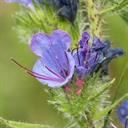
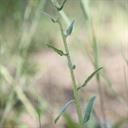
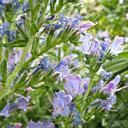
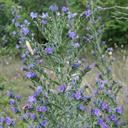
Identification
- Flowers: Abundant flowers are funnel-shaped and bright blue to purple in color. Flowers also have external hairs.
- Seeds: Seeds are 0.8-0.12 in. (2-3 mm) long, brownish grey in color, have a rough texture, and an elongated triangular shape. Seeds can remain viable for several years in the soil.
- Leaves: Leaves are oblanceolate and have white 'speckles' that give them a dimpled appearance. They can also have relatively long white hairs.
- Flowering Time: Flowering occurs June to August, seeds maturing about a month after bloom.
- Life cycle: Viper’s Bugloss is a biennial that spends its first year as a small, flowerless rosette. In the late summer of its second year, the plant produces flowers, with seeds following a month later. The plant then dies off the following winter.
Impacts
- Viper’s Bugloss has been known to act as a secondary host for multiple floral diseases and can spread them throughout an area.
- It contains pyrrolizidine alkaloids that can prove fatal to cattle if ingested in large quantities.
- Viper’s Bugloss is primarily seed spread and can easily travel long distances by hitchhiking on vehicles and clothing.
Control
Most effective control methods
- Small infestations of Viper’s Bugloss can be effectively controlled by manually pulling and disposing in the trash.
- There are currently no biological control agents approved for use against Viper’s Bugloss in the US.
- Chemical control can be effective against Viper’s Bugloss if applied prior to flowering and seed production.
Large Images
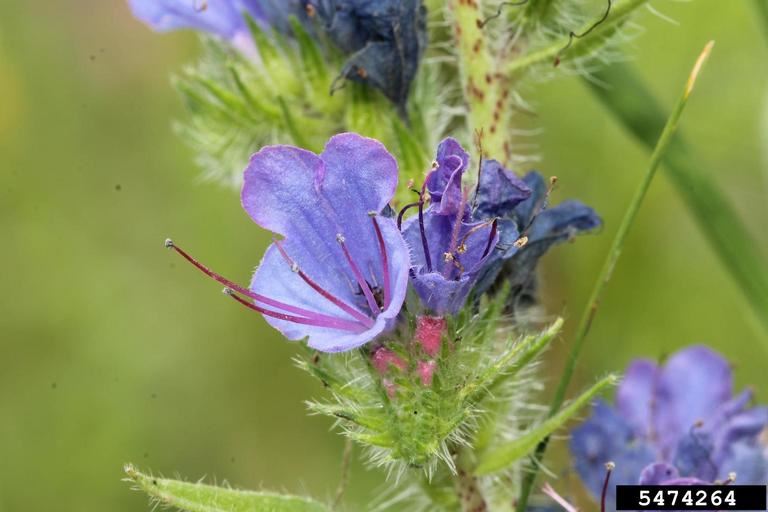
Viper's bugloss: flowers
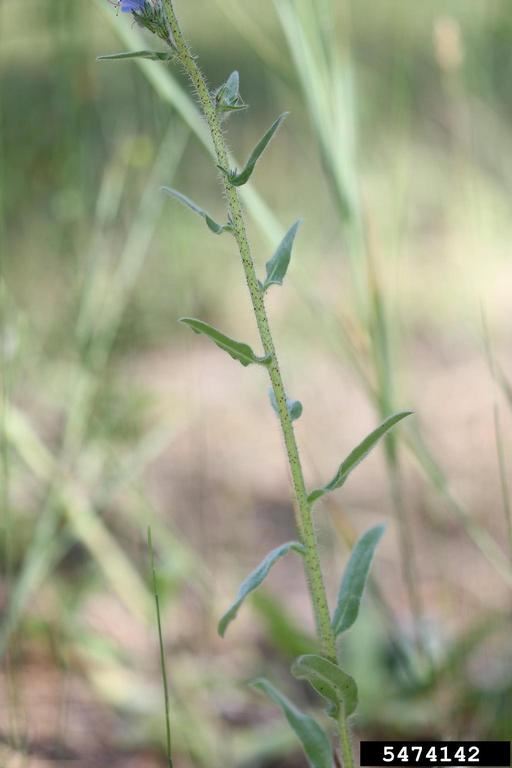
Viper's bugloss: stems and foliage
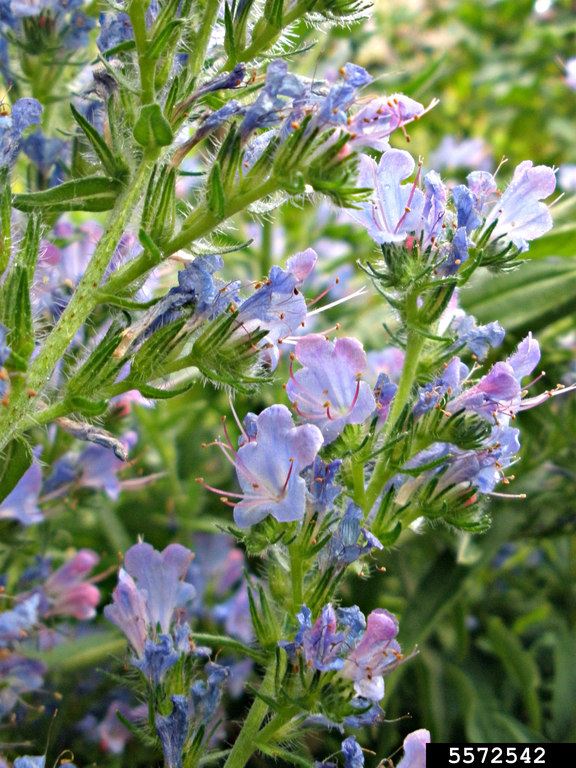
Viper's bugloss: flowers
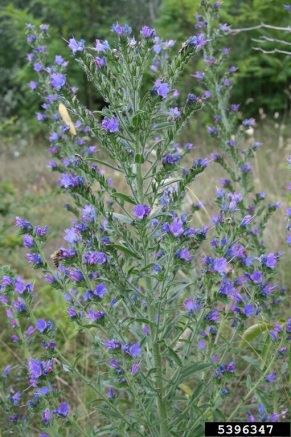
Viper's bugloss
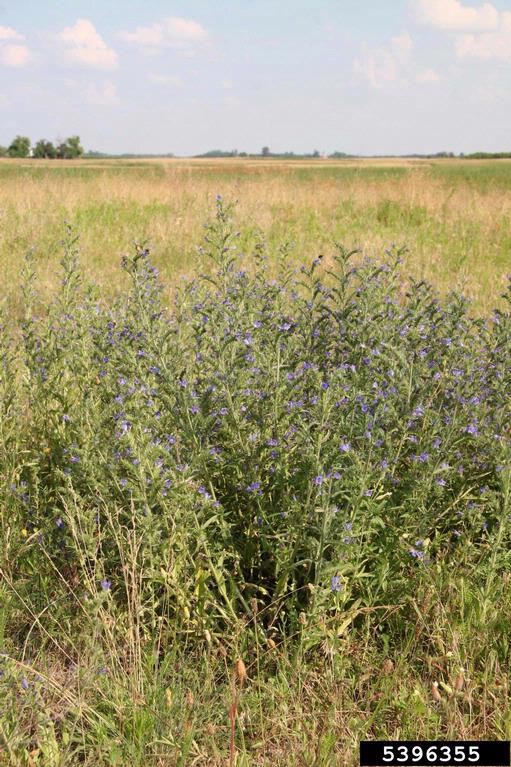
Viper's bugloss: infestation
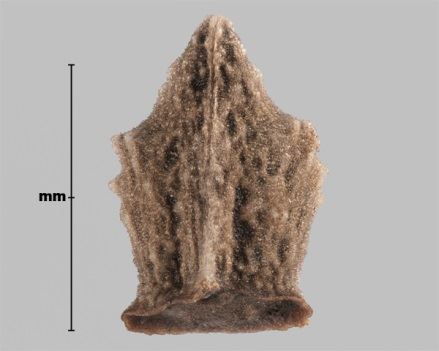
Viper's bugloss: seed
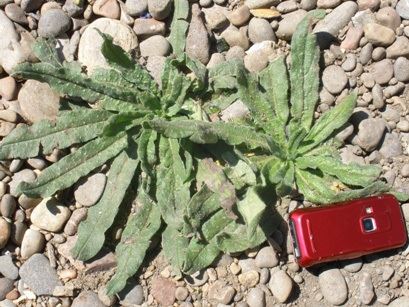
Viper's bugloss: seedlings

Viper's bugloss
Resources
-
References
Alberta Invasive Species Council. (2014, January). Blueweed [PDF file]. Retrieved from https://abinvasives.ca/wp-content/uploads/2017/11/FS-Blueweed.pdf View PDF
DiTomaso, J.M., G.B. Kyser et al. (2013). Weed Control in Natural Areas in the Western United States [PDF file]. Weed Research and Information Center, University of California. Retrieved from https://wric.ucdavis.edu/information/natural-areas/wr_E/Echium_vulgare.pdf View PDF
Graves, M., Mangold, J., & Jacobs, J. (2010, March). Biology, ecology, and management of blueweed [PDF file]. Retrieved from http://msuextension.org/publications/AgandNaturalResources/EB0195.pdf View PDF
Prather, T., Miller, T., & Hulting, A. (2016, June). Control of problem weeds. Retrieved from https://pnwhandbooks.org/weed/control-problem-weeds
Texas Invasives.org (2012, May 4). Echium Vulgare. Retrieved from https://www.texasinvasives.org/plant_database/detail.php?symbol=ECVU
Washington State Noxious Weed Control Board. Blueweed. Retrieved from https://www.nwcb.wa.gov/weeds/blueweed
Wyoming Pest Detection Program. Viper’s bugloss or blueweed (Echium vulgare L.) [PDF file]. Retrieved from http://www.uwyo.edu/capsweb/_files/docs/pest-alerts/weed-alert-echium-vulgare.pdf View PDF




